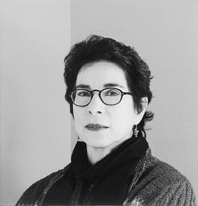In 1918, eight years after O. Henry’s death, a group of his friends gathered for dinner at the Hotel McAlpin in New York City to discuss a way to honor the prolific American author of “The Gift of the Magi,” “The Last Leaf,” “The Ransom of Red Chief,” and many other short stories. The result was the establishment of the annual O. Henry Memorial Awards, given to the writers of what were deemed the two best short stories published by American magazines in the previous year. These winning stories and thirteen others were selected by a committee and reprinted in O. Henry Memorial Award Prize Stories 1919, published by Doubleday.

Since then the O. Henry Awards series has published a volume annually, except for two years following 1951, the year series editor Herschel Brickell died. The editors have followed most of the same traditions established with the first volume, but with each new editor (there have been nine) some changes have been introduced. Laura Furman recently took over the editorship from Larry Dark, who had held the position since 1997, and her first volume, The O. Henry Prize Stories 2003, will be published by Anchor next month.
Furman, the first female O. Henry series editor since Mary Stegner held the position in 1960, has instituted changes that she hopes will enrich readers’ appreciation of the wealth of short fiction published each year in North America. Traditionally, the series editor has considered work only from magazines published in the U.S. and Canada, selecting from them approximately twenty stories deemed the best of the previous year. Of those, three were then chosen for first-, second-, and third-place distinction. From 1919 through 1950, juries determined the top prize winners; from 1954 until 1997, the series editors made that determination. Larry Dark, the eighth editor in the series, reintroduced the original system in 1997, selecting as jurors such well-established writers as Stephen King, Joyce Carol Oates, and Michael Chabon, each of whom then contributed an introduction for one of the three top prize stories, the writers of which received Lucite plaques.
Like Dark and his predecessors, Furman selected the stories to be published, but she has revised the role of the jurors. Instead of voting for the top three stories, the jurors for the 2003 edition—fiction writers Diane Johnson, Jennifer Egan, and David Guterson—were each asked to name a favorite story of the twenty finalists. “I decided that basically they’re all winning stories,” she says. “Yet I loved the idea of three interesting readers telling me which of the twenty they loved the best—not in consultation, because I’ve been on enough committees to know what happens on committees—but as individuals.” In this way every story in the new volume becomes a winner, with the more congenial distinction of “favorites” replacing “top prizes.”
Both Egan and Guterson selected “Train Dreams” by Denis Johnson, originally published by the Paris Review, and Diane Johnson picked “The Thing in the Forest” by A.S. Byatt, published in The New Yorker. Byatt is one of two writers from the U.K. included in the collection. Furman chose to expand the eligibility requirements to include all stories written in English and published in North American periodicals.
The jurors’ comments on the favorite stories—heretofore featured as introductions to the winning stories—are reserved for a section at the end of the book. “I didn’t want anything standing between the reader and the stories,” Furman says. “To me, it’s distracting to read something that’s going to give anything away about a story before you read it.” Comments from each of the 20 winning writers on what inspired their stories and information on the literary magazines that were submitted for consideration are also featured at the end of the book.
The O. Henry Prize Stories 2003 includes the work of writers young and old, from Chimamanda Ngozi Adichie, who was born in 1977, to Evan S. Connell, a veteran of World War II. The stories range in length from 2 pages (William Kittredge’s “Kissing”) to 52 pages (Johnson’s “Train Dreams”). Writers who have previously appeared in O. Henry volumes, such as T. Coraghessan Boyle, Tim O’ Brien, and Alice Munro, are represented in the collection, as are two writers who received the prize for their first stories to ever be accepted for publication—Douglas Light (“Three Days. A Month. More.” first published in Alaska Quarterly Review) and Adam Desnoyers (“Bleed Blue in Indonesia,” Idaho Review).
Furman says that her responsibility is not only to fiction writers, but also to the magazines that publish them. “This is where the intellectual life of our country is based,” she says of the two hundred large and small magazines from which the winning stories are culled. Furman says that commercial magazines, such as The New Yorker and Harper’s, don’t publish enough fiction to properly represent the number of talented short story writers in this country. “So then it’s up to the small magazines. And I think that’s really in line with O. Henry’s mission: to read them and recognize them and thank them.”
Timothy Schaffert is the author of the novel The Phantom Limbs of the Rollow Sisters (BlueHen/ PenguinPutnam, 2002). He lives in Omaha.








